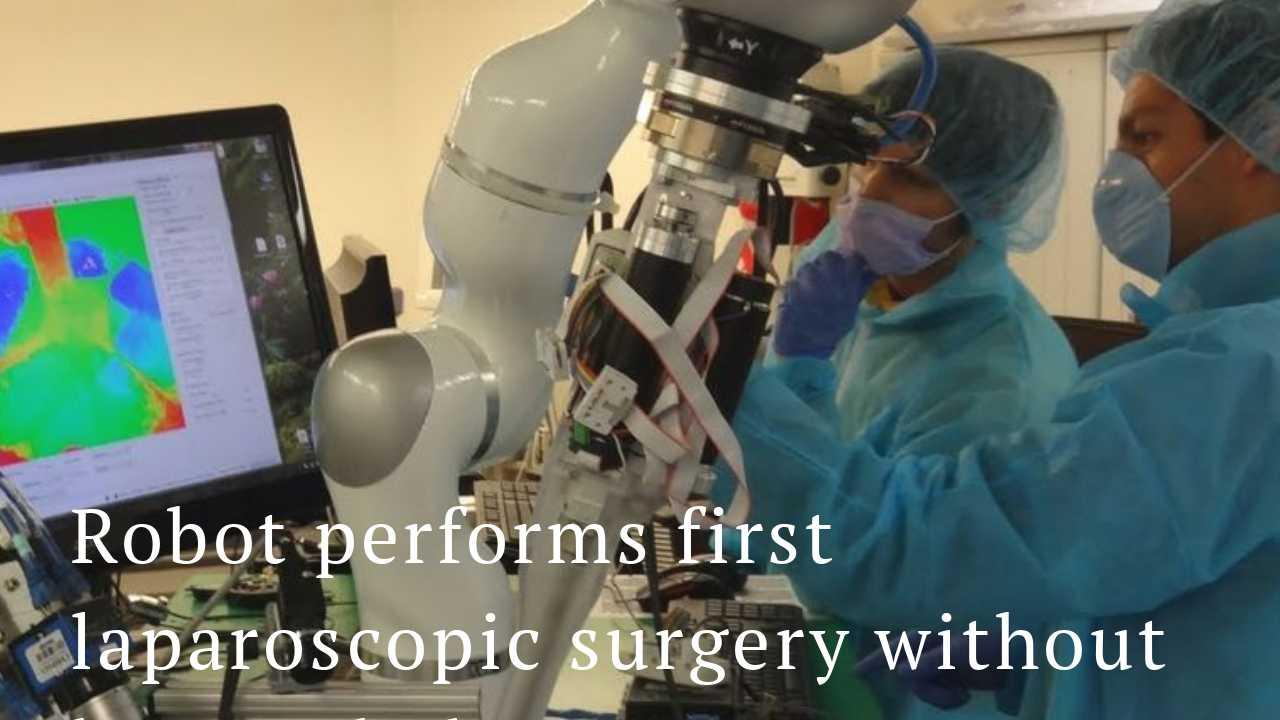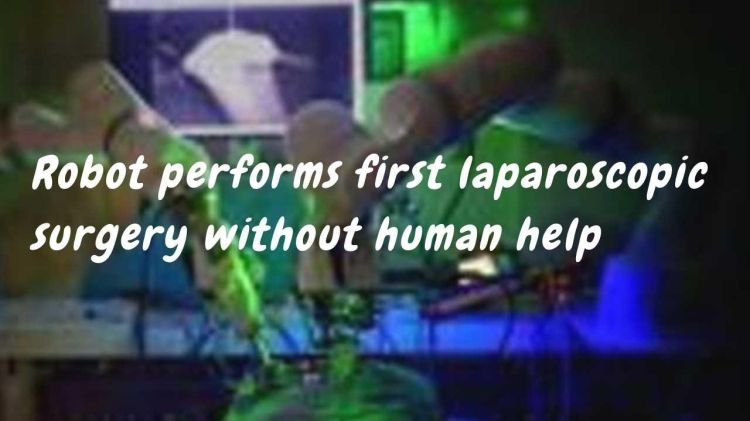
A robot has actually done automated laparoscopic surgical treatment on the soft tissue of a pig without the leading hand of a surgeon. This is a substantial new advanced action in robotics towards fully automated surgical treatment on humans. Developed by a team of Johns Hopkins University researchers, the Smart Tissue Autonomous Robot (STAR) is defined today in Scientific research Robotics.
Findings show that we can automate among the most detailed and also fragile tasks in surgical treatment: the reconnection of 2 ends of an intestinal tract (bowel anastomosis). The Smart Tissue Autonomous Robot (STAR) carried out the treatment in four animals as well as it generated considerably far better outcomes than human beings carrying out the exact same surgery for laparoscopy.
The robotic succeeded at digestive tract anastomosis, a procedure that calls for a high level of recurring movement and accuracy. Linking 2 ends of an intestinal tract is perhaps one of the most challenging steps in a laparoscopic or robotic surgical procedure, calling for a minimal access surgeon to stitch with high precision and uniformity. Also, the smallest hand trembling or lost stitch can cause a leakage that could have tragic difficulties for the patient.
Dealing with collaborators at the Children's National Health Center in Washington, D.C., and also Jin Kang, a Johns Hopkins teacher of electric and computer system design, Krieger helped create the robot, a vision-guided system made particularly to stitch soft cells. Their current version advancements a 2016 version that repaired a pig's intestinal tracts precisely, yet needed a big cut to access the intestine and even more advice from humans.
The team outfitted the Smart Tissue Autonomous Robot (STAR) with new functions for enhanced freedom as well as improved medical accuracy, consisting of specialized suturing tools as well as state-of-the-art imaging systems that give even more exact visualizations of the surgical field.
Soft-tissue surgery is especially difficult for robots because of its unpredictability, requiring them to be able to adapt promptly to manage unanticipated obstacles, Krieger claimed. The STAR has a novel control system that can change the surgical strategy in real-time, just as a human doctor would.
What makes the STAR unique is that it is the first robotic system to plan, adjust, and also implement a medical plan in soft cells with minimal human intervention. A structural-light-based three-dimensional endoscope and device learning-based tracking algorithm established by Kang and also his student's overviews celebrity. "Our team believes an innovative three-dimensional machine vision system is essential in making smart surgical robotics smarter and safer," Kang said.
As the medical field steps in the direction of more laparoscopic strategies for surgical treatments, it will certainly be necessary to have a computerized robot system developed for such procedures to assist, Krieger stated.
The field of surgery has seen significant advancements in recent years with the introduction of robotic surgery. Robotic surgery has enabled surgeons to perform complex procedures with greater precision and control, resulting in reduced patient discomfort and shorter recovery times. In a significant milestone, a robot has performed the first laparoscopic surgery without a doctor's help. This essay will discuss the features and implications of this groundbreaking development.
What is Laparoscopic Surgery?
Laparoscopic surgery is a minimally invasive surgical technique that involves making small incisions in the body to perform procedures. Laparoscopic surgery has several advantages over traditional open surgery, including reduced patient discomfort, shorter hospital stays, and faster recovery times. Laparoscopic surgery is commonly used to perform procedures on the abdomen, pelvis, and chest.
What is the Robot that Performed the First Laparoscopic Surgery Without a Doctor's Help?
The robot that performed the first laparoscopic surgery without a doctor's help is the Smart Tissue Autonomous Robot (STAR). The robot was developed by a team of researchers at the Children's National Medical Center in Washington, D.C. The robot is designed to perform soft tissue surgery, including laparoscopic surgery, with minimal human intervention.
Features of the Smart Tissue Autonomous Robot:
- Advanced Imaging Technology
The Smart Tissue Autonomous Robot uses advanced imaging technology to create a 3D map of the surgical site. The 3D map enables the robot to accurately position the surgical instruments and perform procedures with greater precision.
- Artificial Intelligence
The Smart Tissue Autonomous Robot uses artificial intelligence to make decisions during the procedure. The robot's algorithms analyze the 3D map of the surgical site and make decisions based on the surgeon's pre-operative plan and real-time feedback from the surgical site.
- Multi-Arm Design
The Smart Tissue Autonomous Robot has a multi-arm design that allows it to perform multiple tasks simultaneously. The robot's arms can hold and manipulate surgical instruments, providing increased dexterity and control during the procedure.
- Safety Features
The Smart Tissue Autonomous Robot has several safety features, including collision detection and automatic stoppage. The robot's collision detection system prevents it from coming into contact with surrounding tissue or organs, reducing the risk of complications during the procedure.
Implications of the First Laparoscopic Surgery Performed Without a Doctor's Help:
The first laparoscopic surgery performed without a doctor's help represents a significant milestone in the field of surgery. The development of robotic surgery has already led to improved patient outcomes, reduced discomfort, and shorter recovery times. The use of robots in surgery also reduces the risk of human error, as the robot can perform tasks with greater precision and accuracy.
The first laparoscopic surgery performed without a doctor's help has several implications for the future of surgery. Robotic surgery is likely to become increasingly common, and robots may eventually perform the majority of surgical procedures. The use of robots in surgery may also lead to reduced healthcare costs, as robots can perform procedures with greater efficiency and accuracy than human surgeons.
There are, however, also potential drawbacks to the use of robots in surgery. The development of robotic surgery requires significant financial investment, which may limit access to the technology for some patients. The use of robots in surgery may also lead to reduced employment opportunities for human surgeons and other surgical staff.
Conclusion:
The Smart Tissue Autonomous Robot's first laparoscopic surgery without a doctor's help represents a significant milestone in the field of surgery. The development of robotic surgery has already led to improved patient outcomes, reduced discomfort, and shorter recovery times. The use of robots in surgery also reduces the risk of human error, as the robot can perform tasks with greater precision and accuracy. While there are potential drawbacks to the use of robots in surgery, the benefits are significant.
